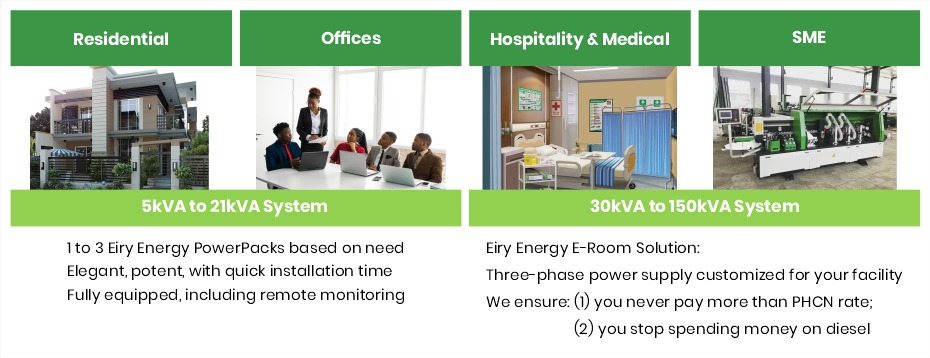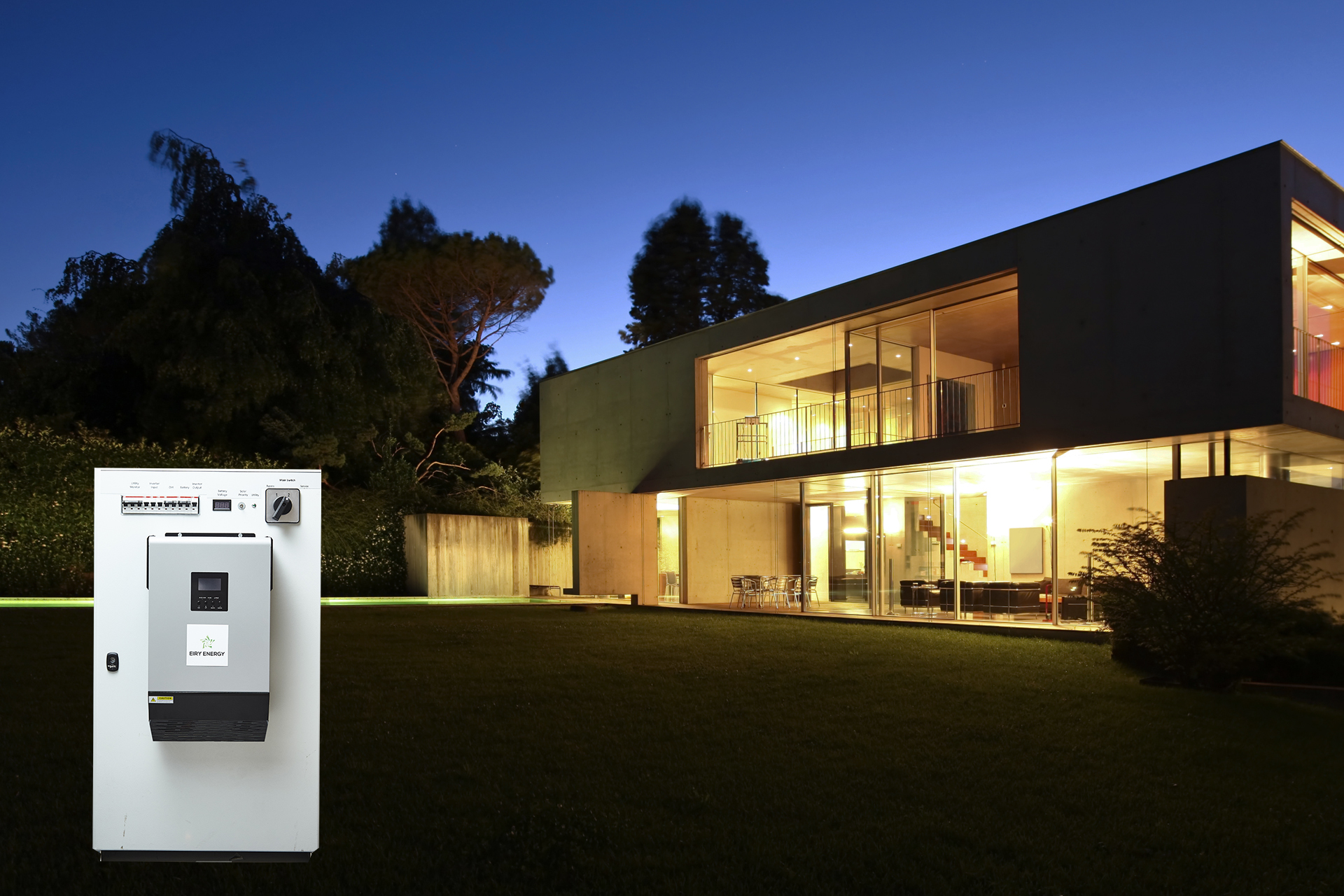Who We Are
Eiry Energy is the Technology leader for alternative power systems in Nigeria
We build the most reliable PowerPacks for harsh environments, like NEPA. Our 3-phase systems uninterruptedly power your whole house/office/hotel … from solar, battery or grid.
Unmatched in safety including over voltage protection, surge protection, fire prevention and fire containment
We look forward to providing you a comprehensive needs assessment and quotation.
Eiry Energy Team
Number of clients
Number of kWH sold
Number of running hours of PowerPacks globally
Our Products
If you want a solution that will give you electricity when you need it; save you money from running a generator and protect you from incessantly rising utility charges, you can't go wrong with the Eiry Energy PowerPack.
Engineered in Switzerland and made from high-quality materials it is designed to last 10 years. The elegant, small footprint of the PowerPack is a great value to any household. With 5kVA/7kVA it would carry all the devices in most houses and last many hours, thanks to the 15kWH Lithium (LiFePo4) battery capacity. You can easily connect two or more of these PowerPacks together for more power output or duration.
Affirmed by a 3-year warranty, the Eiry Energy PowerPacks are an ideal solution to give you available, affordable, reliable electricity; embellishing your comfort with style
Our Products In Action
The Eiry Energy PowerPacks are the indispensable heart of your alternative power solution, ensuring you get reliable, affordable, uninterrupted electricity
The PowerPacks integrate with the utility and possibly Solar PV panels. The innovative design of the PowerPack makes it possible for you to adopt a versatile ‘stepped’ approach to your installation. Starting with a single unit, you can grow to a multi-unit configuration as and when increased power requirements arise.
Residential spaces:The PowerPacks are ideal for apartments where conserving space is essential, and individual generators are impractical and stressful.
In “single occupant buildings” solar PV cells can be integrated to build a Solar Home System. This would enable you generate your own electricity and give you autonomy from the utility, saving you a lot of money
Commercial spaces:SMEs in the service sectors would find the PowerPacks efficient and elegant. The PowerPacks run the office for a whole 9 hour work day, powering all your needs in a calm environment, allowing you to focus completely on serving your customers, growing your business while saving facility costs
Small Medium Enterprises in the manufacturing sectors would typically build Power Systems around the Eiry Energy E-Room, providing up to 150kW to drive their machinery and production lines. This boosts production up-time, and reduces production costs and logistical stress

Testimonials
hidden
Take control of
your electricity needs








